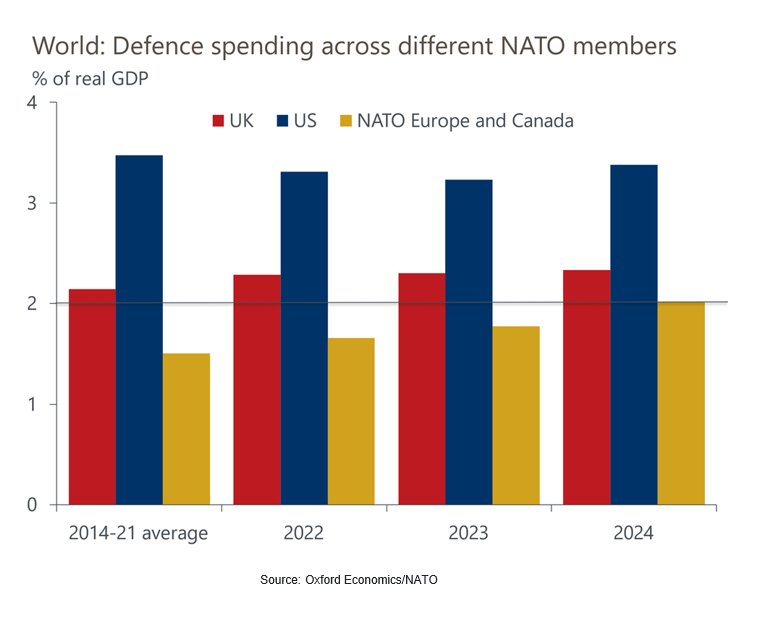Defence spending could still pose a fiscal challenge
We think the UK’s commitment to fund an increase in defence spending to 2.5% of GDP by cutting the overseas aid budget will not provide a substantial boost to growth.
What you will learn:
- If in cutting overseas aid spending, the government is reducing day-to-day spending to fund defence spending that will be spread across both current spending and capex then it could help the Chancellor to preserve a little fiscal space at the Spring Forecast on March 26.
- This may not be the final word on defence spending since the NATO defence spending target could be lifted to at least 3% of GDP at its summit later this year.
- Given Labour’s commitment to its “non-negotiable” fiscal rules, defence spending could become a fiscal constraint on the current government.

Tags:
Related Content

The UK’s fiscal adjustment is at risk of failure
The UK is planning one of the largest fiscal consolidations of any advanced economy over the next two years. We expect it to result in much weaker GDP growth than the Office for Budget Responsibility forecasts and think the government's balance sheet is still likely to deteriorate.
Find Out More
UK Labour market data woes show the importance of nowcasts
We think that valid concerns about the quality of data from the UK's Labour Force Survey (LFS) make it virtually unusable at present. Considering it will likely take another two years to fix the problems, this poses a major headache for policymakers and economists alike.
Find Out More
Eurozone: tariff threat weighs on the outlook
The eurozone economy remains stuck in a low gear and we have recently cut our growth forecasts as a result of our expectation of US tariffs on European imports being imposed over the coming months. While we still think the Eurozone economy is more likely to continue to grow at weak pace rather than fall into recession, the list of risk factors – ranging from more cautious households and firms to a full-blown trade war – remains long. In this webinar, we will discuss both the recent changes to our baseline and the risks around it, as well as their consequences for the fiscal and monetary policy outlook.
Find Out More
Will eurozone tariffs be the straw to break the labour market’s back?
We have revised our Eurozone labour market forecasts to incorporate the impact of US tariffs, and now expect employment growth to come to a near standstill this year. Although risks to the labour market are tilted to the downside, various indicators continue to suggest that a serious downturn will be averted.
Find Out More